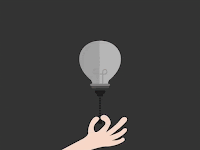6
Tips for Healthier Sleep
While many people
turn to caffeine after a night spent tossing and turning, there’s no substitute
for a good night’s sleep.
“You just can’t cheat
it,” Watson said. “There’s no pill, there’s nothing that you can take to try to
overcome, or to try to replace it.”
To help you stop
fighting and start sleeping, Watson offers these tips:
1. Keep a Regular Sleep
Routine
You can help sleep along by going to bed and
waking up at the same time each day, as well as by sticking to your pre-bed
routine so that your body knows that sleep is coming.
2. Prepare a Sleep-Friendly
Environment
Cool, dark, and quiet are essential. Turn out
the lights or use light-blocking curtains or shades. If you live in a noisy
environment, white noise machines or ear plugs may block out some of the
sounds.
3. Avoid Caffeine After
2:00 p.m.
If you must drink caffeine, avoid it after
two in the afternoon, because it can increase your chances of insomnia later
that night.
Regular exercise can help you sleep more
soundly, but for some people, it can be disruptive if it's done right before
going to bed.
5. Skip the Pre-Bed
Cocktail
Alcohol may make you drowsy, but it can
disturb your sleep later as the alcohol wears off.
6. Create a Tech-Free Zone
 Cell phones, computers, and tablets can all
disrupt sleep because their ever-glowing lights—especially those in the blue
wavelengths—can throw off your circadian rhythm by mimicking daylight.
Cell phones, computers, and tablets can all
disrupt sleep because their ever-glowing lights—especially those in the blue
wavelengths—can throw off your circadian rhythm by mimicking daylight.
Reference: http://www.healthline.com/health-news/six-tips-for-better-sleep-053114




















